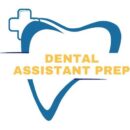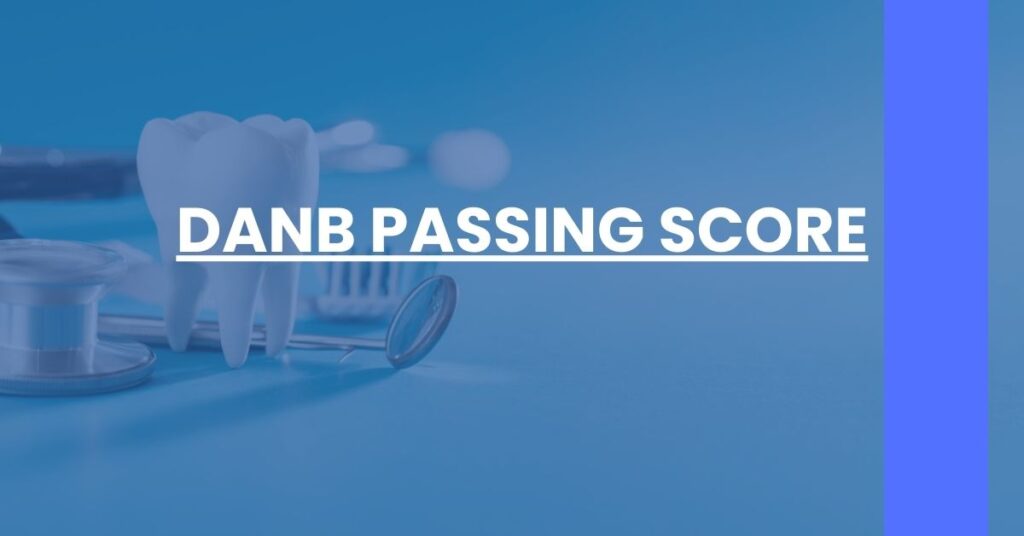The Dental Assisting National Board passing score varies by exam but is set to ensure dental assistants have the necessary knowledge and competencies for their role. If you’re preparing for a DANB test like the RHS, ICE, or CDA, aiming for a score that demonstrates proficiency is essential.
In this piece, you’ll uncover:
- What the DANB passing score means for your career
- How to approach exam prep effectively
- Strategies in case you need to retake an exam
Achieving this milestone is a stepping stone towards enhanced professional credibility and opportunities in dental assisting. Let’s dive into making your DANB success a reality.
Introduction
Are you aiming to earn your certification from the Dental Assisting National Board? Achieving this goal is pivotal for many dental assistants who wish to demonstrate their professional competence and accelerate their career. A critical step in earning your DANB certification is passing the required examinations. Understandably, you might feel anxious about the exams, especially when it comes to knowing the passing score. In this comprehensive look at the DANB passing score, we’re here to put your concerns to rest and equip you with the valuable insights needed for success. You’ll find out what the passing scores are, how they’re determined, and get in-depth guidance on approaching the exams confidently.
What Is the DANB?
The DANB stands for the Dental Assisting National Board, an esteemed organization that has been the premier certification body for dental assistants since 1948. Its role in the dental community involves administering examinations and credentials that validate your expertise and compliance with industry standards. The DANB offers several exams and certifications, including the Certified Dental Assistant (CDA), which is recognized and sometimes required by many states and employers within the US. Earning a DANB certification is not just a formality; it’s a recognized mark of distinction that can significantly impact your career trajectory, potentially leading to higher earnings and broader job opportunities.
The Significance of the DANB Certification
When you become DANB certified, you’re not only enhancing your résumé but also joining an elite group of dental professionals dedicated to providing the highest level of care. This certification is a testament to your commitment to your role, your patients, and the industry at large. It often translates into tangible benefits, such as increased salary prospects and added respect within the dental community. According to the own research, Certified Dental Assistants earn a higher median salary and enjoy greater job satisfaction compared to those who are not certified. Furthermore, many states and regulatory bodies have adopted DANB exams as a standard or requirement for license registration or renewal, making these certifications even more essential to your professional development.
Understanding the DANB Examination Structure
An important step in conquering the DANB exams is to understand their structure. The Certified Dental Assistant (CDA) exam, for instance, is composed of three major components: General Chairside Assisting (GC), Radiation Health and Safety (RHS), and Infection Control (ICE). These sections cover a wide spectrum of knowledge that every capable dental assistant should master. Each section includes multiple-choice questions, which can range from practical scenarios to fact-based inquiries. Getting familiar with the format of the exams ahead of time through study guides and practice tests can greatly increase your preparedness. Remember, tackling these exams is not just about rote memorization; it’s about demonstrating that you have a comprehensive understanding of the practical and theoretical aspects of dental assisting.
What Constitutes a Passing Score on DANB Exams?
Your primary objective in taking the DANB exams is to achieve the passing score required to earn your certification. While the specific number might vary between different exams and over time, the passing scores are designed to ensure that only candidates who have sufficiently demonstrated their knowledge and skills in dental assisting become certified. The scoring system employed by the DANB might not be a percent or a simple number; it is more nuanced, taking into account the complexity and rigor of the certification standards. This fluid system requires you to focus on mastering the material to the best of your ability rather than targeting a specific target number.
To get an in-depth understanding of how the scores are tabulated, you can review resources provided by DANB that have incorporated their scoring methodologies.
Factors Affecting the DANB Passing Score
The determination of a passing score on the DANB exams is not arbitrary; various factors come into play. Studying and passing these tests require an understanding of more than just the content; you need to be aware of the scoring process too. Factors affecting the passing score include the relative difficulty of the exam and the universally applied standard setting procedures.
More specifically, the DANB participates in rigorous job analysis studies that ensure the exams remain relevant and up-to-date with the competencies required in today’s dental assistant roles. Through these studies, it can adjust the passing scores to reflect the current state of the profession accurately. Furthermore, panels of subject matter experts play a significant role in setting the standards, including what constitutes a passing score, so that your certification reflects a nationally accepted level of expertise. Keep in mind that each exam you encounter may be calibrated to a slightly different standard, hence, understanding this component of the certification process can offer you extra confidence as you prepare.
In the next section, we’ll delve into the actual methodology used by the DANB to calculate passing scores, so that you can have a fully rounded view of what’s ahead on your certification journey.
How Passing Scores Are Calculated
When it comes to the DANB exams, one critical question on your mind is likely, “How is the passing score determined?” The DANB utilizes a criterion-referenced standard, which means that your performance is measured against a predetermined level of competence, not against the performance of other test-takers. This approach is designed to ensure fairness and objectivity in the certification process.
To establish these criteria, the DANB employs the Angoff method, a widely respected statistical technique used across various professional testing programs. In this method, a panel of experts evaluates each exam question, estimating what percentage of minimally competent candidates would answer each item correctly. This analysis helps to determine the cut score—the minimum number of questions you must answer correctly to pass the exam.
Understanding the calculation method for passing scores can empower you, as it underscores the importance of a comprehensive understanding of the material rather than focusing on outperforming peers. For a deeper dive into this process and how it might specifically apply to your upcoming exam, the DANB provides resources that you may find invaluable during your preparation phase: Understanding Exam Scoring.
As we transition from score calculations to actual pass rates, remember that while the methodology behind determining a DANB passing score is intricate, your focus should remain on readiness and thorough knowledge of the subject matter.
DANB Exam Pass Rates and Trends
A common query you might have is regarding the pass rates for the DANB exams. While specific pass rate statistics are not published extensively, keeping an eye on trends can be useful. Though the exam difficulty can fluctuate slightly over time—often reflecting the evolving complexities of the dental assisting profession—the standard of competence expected by the DANB remains steadfast.
Those fluctuations, however, should not deter you. They simply signify the commitment of the DANB to uphold the professionalism of the industry. The trends in pass rates might also indirectly indicate areas where candidates may consistently struggle, directing you to focus your study efforts more heavily in those areas for a better chance of acing the exam and achieving the coveted danb passing score.
Your best strategy remains to prepare comprehensively, ensuring a strong grasp of every exam subject. Resources such as The DALE Foundation’s online practice tests can offer invaluable assistance in your preparation process.
Preparing for the DANB Exams
Now, let’s tackle perhaps the most pivotal aspect of reaching that danb passing score—exam preparation. Whether the General Chairside (GC), Radiation Health and Safety (RHS), or Infection Control (ICE) exam is on your horizon, thorough preparation is your key to success.
Here’s a strategic approach to preparation:
- First, familiarize yourself with the exam content. The DANB provides detailed outlines of each exam component. Understand the weighting of each area and allocate your study time accordingly.
- Next, engage with a variety of study resources. The DALE Foundation’s online practice tests and review courses are tailored to the DANB exams and can significantly enhance your grasp of the content and format.
- Active studying strategies like summarizing, teaching, or applying the information to case studies can deepen your understanding.
- Practice exams are a critical component to assess your preparedness. Take advantage of practice tests to pinpoint your strengths and knowledge gaps.
Remember, effective studying isn’t about cramming; it’s about creating a consistent, manageable routine leading up to the exam, as affirmed by studies on the effectiveness of practice testing.
By steadily building your knowledge and confidence, you’ll approach exam day poised to achieve a passing score—and ultimately cement your status as a certified dental assistant.
What Happens if You Don’t Pass the DANB Exam?
Despite best efforts, there may be instances where you don’t achieve the passing score on your first try. It’s understandably disappointing, but it’s not the end of the road. The DANB allows you to retake exams, although you’ll need to adhere to specific retake policies. These policies may involve waiting periods, additional fees, and limits on the number of attempts within a certain timeframe.
An essential part of your exam journey includes familiarizing yourself with these DANB retake policies. That way, in case you do need to retake the exam, you’re not caught off guard. Planning for all outcomes ensures you’re prepared to navigate any setbacks with resilience and determination.
Although information on retake policies was not readily available, you can access the official website to seek further guidance on how to proceed if you don’t pass the first time. This proactive step primes you with the required information should you need to plot the next steps in your certification journey.
Frequently Asked Questions About the DANB Passing Score
In your pursuit of achieving the DANB passing score, you’re bound to have questions. Common inquiries include understanding how to interpret DANB score reports, the actions to take after receiving your exam scores, and where you can find further support.
The score report you receive after your exam offers detailed insights into your performance. It’s more than just a score—it serves as a diagnostic tool to assess areas of proficiency and those needing improvement. If your score meets or exceeds the passing threshold, congratulations are in order! If not, the report provides you with a roadmap for how to approach your studies moving forward.
Should you seek additional support or clarification on interpreting your scores or planning what to do next, the DANB is ready to assist. Explore their resources at DANB Exam Information.
Conclusion
As you set your sights on achieving the DANB passing score, let this thorough guide serve as your roadmap to success. Securing a passing score on the DANB exams not only bolsters your professional credentials but also acknowledges your dedication and expertise in dental assisting—traits that will serve you well throughout your career.
Prepare wisely, stay informed about the processes, and approach the exams with confidence and determination. Remember, this journey is a testament to your commitment to excellence in dental health care—a goal well within your reach with the right preparation and mindset. Here’s to your success on the DANB exams and the flourishing career that awaits beyond them!

